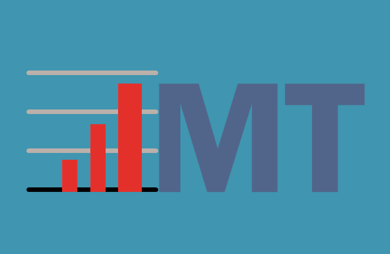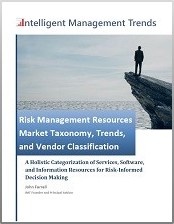These risk manager survey results are stunning. According to the 14th annual Excellence in Risk Management report published jointly by Marsh and the Risk Insurance Management Society (RIMS), there is a significant gap in risk manager awareness of the use of disruptive technologies. Nearly a quarter of the risk professionals  surveyed stated their company does not use or plan to use any of the thirteen emerging technologies presented in the study.
surveyed stated their company does not use or plan to use any of the thirteen emerging technologies presented in the study.
The survey results, released at the RIMS 2017 Annual Conference & Exhibition held in Philadelphia, also found 55% of risk professionals do not conduct risk assessments of disruptive technologies. Stunning.
The RIMS Survey Highlights
The study surveyed over 700 risk managers and C-level executives across industries to obtain their perception of disruptive technology and their company’s ability to identify, assess, and manage related risk factors. Use this report link to review the full details. The list of technologies presented includes telematics, sensors, Internet of Things, artificial intelligence, and other innovative technology advances that many, if not most, companies are at least considering using today.
The most egregious example of the awareness gap:
- Perception: 52% of the responding risk professionals say their organization does not use, or plan to use, the Internet of Things (IoT).
- Reality: A 2016 Telecommunication Industry study found 90% of all companies will be using IoT within two years. This is supported by multiple technology analyst firms indicating IoT spending is quickly approaching $1 trillion worldwide.
The report authors were a bit overzealous when they presented 93% usage of wearable technology as a counterpoint to the 25% of risk professionals noting use or consideration in their own company. The 93% figure cited a 2015 study by APX Labs (now Upskill) which targeted over 200 companies in only the industrial sector.
Despite the overreach on this one observation, the conclusion of the study is sound. A substantial portion of risk professionals are not aware of innovative technology actually in use or under consideration for use within their own companies.
The survey results are stunning from three perspectives:
- It appears personal curiosity and awareness of top technology disruptors may be a missing attribute among many risk managers.
The profile of a successful risk manager includes many skills and personality traits. With plentiful examples of how innovative technology has drastically disrupted retailers, investors, newspaper publishing, photography equipment manufacturers, bookstores, the recording industry, and others, personal interest in emerging technology trends should be a core risk manager attribute.
One of the disappointing observations in the report indicated some risk professionals lump disruptive technologies into the same category as cyber security risks. Perhaps a basic misunderstanding of disruptive technology concepts is a factor.
- The success of the risk management profession increasingly relies on the ability to assess emerging risks such as disruptive technology.
Given all the discussion in the profession about risk management lines of defense, risk managers should be proving their ability to guide the proactive identification, assessment, management, and communication of emerging risks as part of the risk management function. While the frontline defense becomes more risk aware, and takes on more risk identification and management responsibilities within their own business unit, a cross-functional, longer-term perspective from risk managers is necessary to support the identification and assessment of emerging technology risks.
The Marsh/RIMS report points out the pace of innovation “leaves many executives struggling to understand how disruptive technologies affect their business strategies, models and operations.” Sounds like a prime role for risk managers. This offers one path to separate from the dangerous perception of risk professionals as list managers of past risk events.
It would be far better if the percentage of risk professionals conducting risk assessments of disruptive technology were closer to 100% rather than 45%.
- Risk professionals should be the leading proponents for considering the use of some of the innovative technologies on the survey list!
More study results: only 48% of risk professionals believe their company is using or planning to use sensors for tracking, analyzing, or predicting events, and a meager 28% say their company is using or planning to use artificial intelligence.
How can this be true? Risk professionals themselves should be considering the use of these technologies to help build systems for risk discovery, risk data acquisition, risk data management, risk analytics, predictive modeling, and decision support in just about every industry. Mobile technologies, metering, monitoring, real-time analytics, predictive analytics, machine learning, and cognitive computing are just some of the innovative technologies that can help discover and capture higher volumes of risk information while improving the speed, capacity, and timing of risk analysis.
Disruptive technologies, by definition, threaten a company’s competitiveness or existence. They should be on the emerging risk radar for every organization. Risk managers can help lead enterprise efforts to identify and assess emerging technology trends as they are positioned to coordinate cross-functional risk considerations.
One bit of advice for risk professionals: make sure you educate yourself about the use of wearable technology in your organization before you find yourself an unwitting participant in implantable technology!







